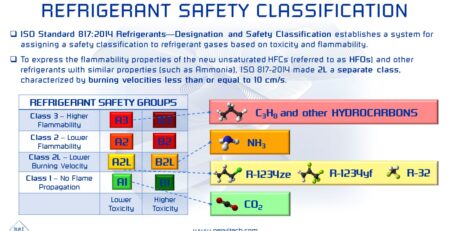Why Size Matters for NDIR Gas Sensors
Why Size Matters for NDIR Gas Sensors
NET manufactures a wide range of optical gas sensors for carbon dioxide, flammable gas, refrigerants and SF6. The sensors are provided with all required driver circuitry on-board to make their use as simple as possible. They are provided in primarily two differently sized housings: either as a 20 mm diameter cylindrical device or as 32 mm diameter device.
We are often asked what the difference between the two versions is. Many customers believe that, given a choice, it is often better to select the smallest possible package to minimize the volume used inside their instruments and to maximize the available space for other functionalities such as larger batteries, wireless capability or several other options. For customers designing instruments where space is at an absolute premium, such as devices destined for portable use, this is mostly true and, in fact, even the smaller NET sensor provides excellent performance and capability.
However, for many instruments designers, especially fixed systems, where size is not such a problem, it is often preferable to select the larger version of our sensors over their smaller cousins. For some gases (such as refrigerants and SF6) the only possible option is the larger sensor, since a 20 mm package would not a provide a large enough optical path to efficiently detect those gases. Hence, if you plan to measure carbon dioxide or especially flammable gases, and you have space available in your design, we would recommend choosing the larger sensor. A larger sensor allows us to incorporate a longer path length between the optical source and the pyro-electric detectors inside. A longer path length provides several benefits.
- Resolution – since the amount of infra-red light absorbed by a target gas is proportional to the amount of gas in the light path, a longer path means more light absorption. The increasing absorption allows the sensor to resolve to lower gas concentrations which means that the user can detect smaller and smaller changes in gas concentration.
- Stability – a longer path length and larger signal means that any small changes resulting from drift over time are proportionally less significant. As a result, signal stability over time is greater and the incidence of false alarms is reduced. In addition, a larger sensor may provide the means to reduce the frequency of calibration, resulting in considerable reduction in maintenance costs in the lifetime of the instrument.
- Humidity – as with signal drift above, changes due to ambient humidity are proportionally less significant with a larger output signal. Since a longer path length provides a larger output signal, the impact of changes due to humidity are significantly reduced.
- Cross sensitivity – by their nature, optical sensors are sensitive to changes in light absorption. Since many gas sensors can absorb infra-red radiation, a feature of IR sensors is that they are sensitive to a range of target species. A longer path length sensor allows NET to provide a more selective response to the required gas and to reduce or eliminate responses to other non-target gases.
This is why size matters for NDIR Gas Sensors: wherever possible we recommend our customers developing fixed systems to consider the use of our larger housing sensors. It is our belief that by using our longer path sensors, considerable competitive advantage and best performances for a gas detector can be achieved.










